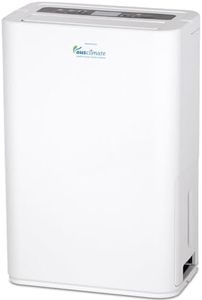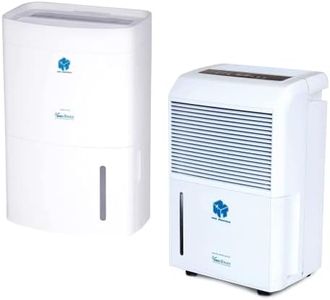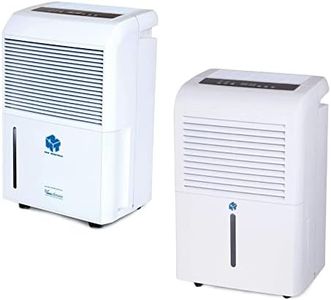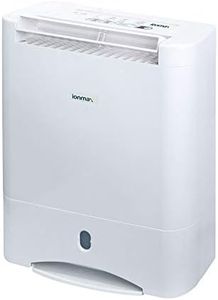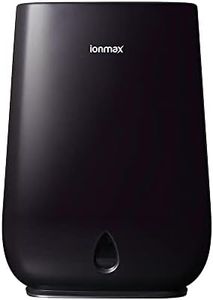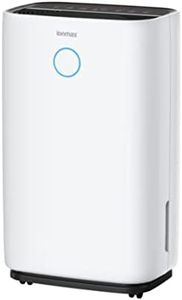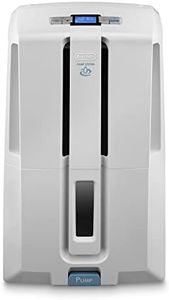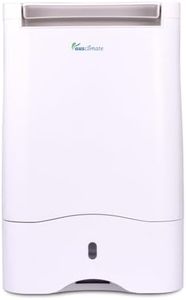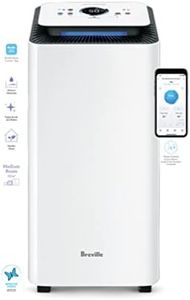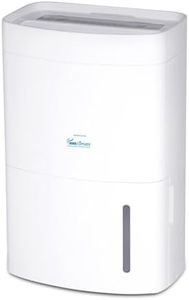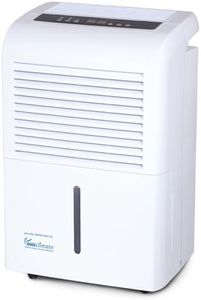We Use CookiesWe use cookies to enhance the security, performance,
functionality and for analytical and promotional activities. By continuing to browse this site you
are agreeing to our privacy policy
10 Best Garage Dehumidifiers
From leading brands and best sellers available on the web.By clicking on a link to a third party's website, log data is shared with that third party.
Buying Guide for the Best Garage Dehumidifiers
Choosing the right garage dehumidifier can really make a difference in protecting your car, tools, and other stored items from moisture damage, rust, and mold. Before deciding, think about how damp your garage gets and how often you’ll use the dehumidifier. By understanding a few key features, you’ll be able to pick a model that matches your garage size, climate, and personal habits.Capacity (Pint Per Day)Capacity tells you how much water a dehumidifier can remove from the air in 24 hours, usually measured in pints. This is important because a bigger, more humid garage will need a machine that can pull out more moisture. Lower capacity models (20-30 pints/day) are best for smaller or less damp garages, medium (30-50 pints/day) for average-sized garages with moderate humidity, and higher capacity (50+ pints/day) for large or very damp spaces. To pick the right one, consider both the size of your garage and how much moisture you see—like condensation on walls or a musty smell.
Coverage AreaCoverage area is the size of the space the dehumidifier can effectively service, usually measured in square feet. This is important because an undersized unit won’t keep up with the moisture and an oversized unit could use extra energy without added benefit. Small garages can use units for around 300-500 sq. ft., while bigger garages may need models covering 800 sq. ft. or more. Measure your garage floor to figure out what coverage you need.
Drainage OptionsDrainage refers to how the water collected is removed from the dehumidifier. Some use a built-in tank you have to empty, but others let you attach a hose for continuous draining or even have a pump for upward drainage. If you don’t want the hassle of emptying tanks, look for a model with hose or pump options. Your choice depends on how often you’ll be able to check the unit and whether your garage has a floor drain or convenient sink nearby.
Operating Temperature RangeThe operating temperature range tells you the minimum and maximum temperatures at which the dehumidifier works well. Garages can get very cold in the winter and hot in the summer, so it’s important to match the dehumidifier to your climate. Standard models work best in temperatures above 60°F, but for colder garages, pick a model designed for low-temperature operation—even down to 35°F or 41°F—so it keeps working through all seasons.
Noise LevelNoise level measures how loud the dehumidifier will be, usually given in decibels. For garages used as workspaces or attached to your home, you might want a quieter model, especially if the dehumidifier will run often. Lower decibel levels mean quieter operation. If noise doesn’t bother you or your garage is detached, this may not be as important, but for everyone else, comparing noise levels could make your garage more comfortable to use.
Energy EfficiencyEnergy efficiency shows how much electricity the dehumidifier uses to remove moisture. Choosing an efficient model saves you money and is better for the environment. Look for energy certifications or check how much power (watts) each model uses for the same capacity. If you’ll run the dehumidifier often or year-round, a more efficient unit can make a real difference in long-term power bills.
